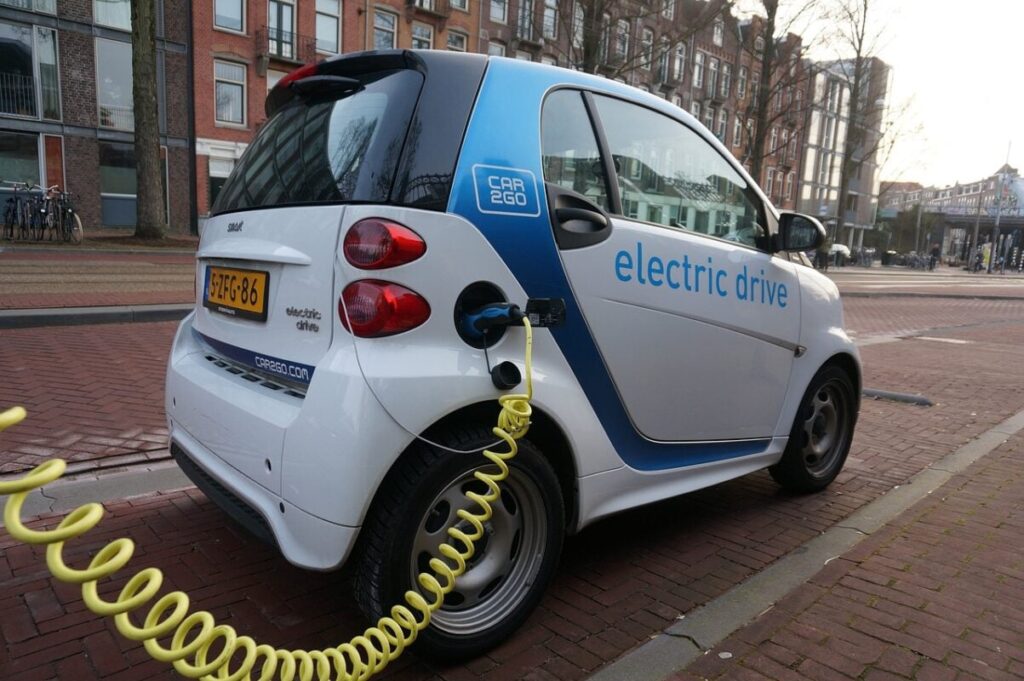Secondhand electric vehicle (EV) sales helped the UK’s used car market grow for the sixth successive quarter, figures from the Society of Motor Manufacturers and Traders (SMMT) show.
Used battery electric vehicles (BEVs) recorded a 52.6% increase in sales, reaching a record market share of 2.4%. Sales of plug-in hybrids (PHEVs) and hybrids (HEVs) also grew, up 25.2% to 21,580 units and 43.6% to 78,782 units respectively.
The record numbers for Q2 continue the upward trend seen in Q1 this year, when sales of used BEVs increased by 71%.
SMMT attributes the rise in the used car market as a whole (including petrol and diesel vehicles) to the new car sector’s sustained growth. However, the growth seen by the used EV market is particularly positive in light of dropping new BEV sales.
The trade association reduced its forecast new car sales for the year, blaming low EV demand. The majority of new electrified vehicle sales were by fleet owners and operators; these latest figures suggest that private EV demand is not low, per se, but reduced by costs.
EVs still make up only a fraction of the secondhand market, in part because the relative newness to the market means fewer are available and, as a result, prices do not decrease as fast as they might for internal combustion engine (ICE) vehicles.
There are also concerns raised over battery degradation, the suggestion being that the range an EV can travel without charging will decrease. A cited barrier to EV uptake is that a lack of charging infrastructure causes anxiety for consumers.
Not only are available chargepoints an issue for EV drivers, the cost of an EV tends to be higher than an ICE vehicle. Expense is a significant barrier, perhaps indicating an area that should be addressed tp accelerate the transition to zero carbon transport.
As Mike Hawes, SMMT chief executive, said: “The increased supply of electric vehicles to second and third owners is helping more motorists make the switch – underlining the importance of energising the new EV market to support a fair transition for all.
“Maintaining momentum requires reliable, affordable and green EV charging up and down the country and incentives to get all of Britain on board the net zero transition.”
Meeting moving transport targets
SMMT’s Vision 2035: Ready to Grow report recommended that the UK automotive sector could fuel £50 billion of green growth in the next decade, should the right market incentives and policies be in place. According to SMMT, the pace of the transition needs to “increase significantly”, with zero emission vehicles mandated to comprise a minimum of 22% of brands’ new car registrations over the full year.
Hawes said: “More people than ever are buying and driving EVs but we still need the pace of change to quicken, else the UK’s climate change ambitions are threatened and manufacturers’ ability to hit regulated EV targets are at risk.”
He will sit on the Council for Net Zero Transport, launched at the beginning of June, chaired by John Gummer (Lord Deben), former chair of the Climate Change Committee. The independent committee looks to “support the new government as it refocuses on the challenge of delivering net zero and maximising the benefits to UK Plc from the transition”.
In February this year, then-shadow minister for roads, Bill Esterton, told Recharge UK that Labour would reinstate the 2030 target date for a ban on new ICE vehicle sales in the UK. His claim came after Rishi Sunak’s Conservative government was met with severe criticism from EV industry members when it pushed the deadline back to 2035.
Zero carbon transport factored into Labour’s party manifesto, but so far, the new government has been tight-lipped on the issue of reinstating the ban. The new secretary of state for transport, Louise Haigh, included “delivering greener transport” in her five strategic priorities, having promised to deliver “the biggest overhaul to transport in a generation”.






